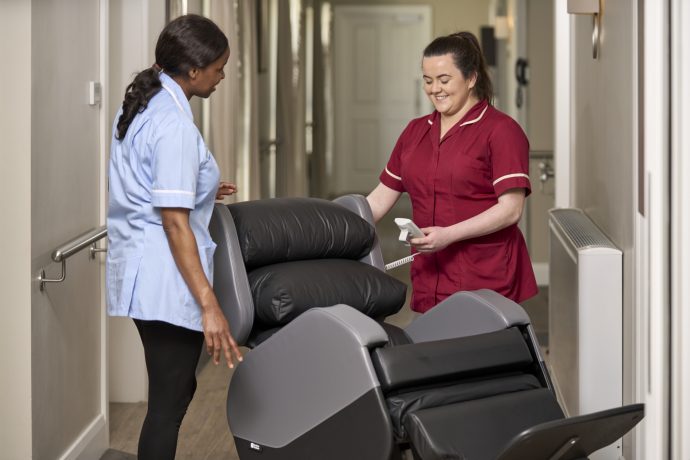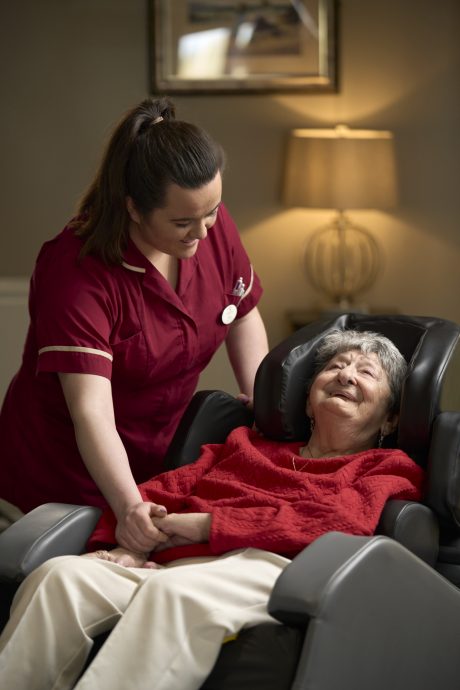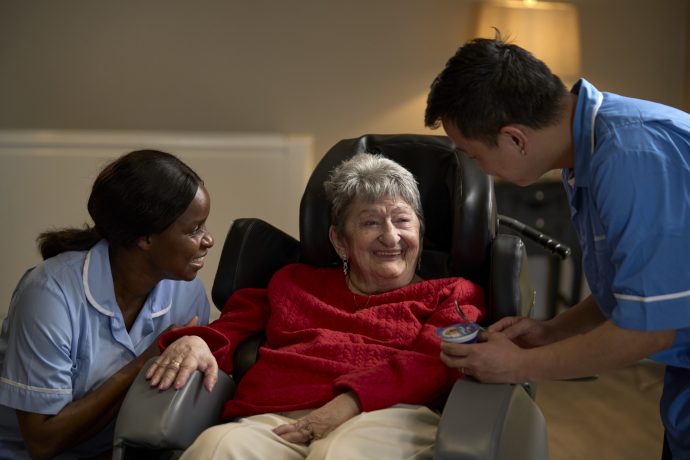
2nd September 2025
Empowering clinicians with expert-led training on clinical seating, pressure injury prevention, and best practice.
Learn More

Let our online product finder guide you through our simple steps to choose the chairs that best meet your patient’s needs.
Seating Solution FinderThe Envelo cushion provides excellent pressure redistribution and comes as standard on all Seating Matters chairs, meeting the clinical needs of most clients.
Explore Envelo RangeSeating Matters specialises in clinical, therapeutic seating solutions designed to improve patient care and safety, offering products for pressure injury prevention, postural support, and mobility assistance in healthcare settings.
Learn MoreDiscover how Seating Matters has transformed lives with our innovative seating solutions - read our inspiring customer success stories now!
Customer StoriesUsed in academia, in clinical practice and with caregivers around the world to guide their practices around specialist seating.
Download Free HandbookAdvice when transferring patients with contractures

It is a common occurrence for clinicians to assess dependent older people for contractures in community and residential settings.1 Contractures contribute to increased disability by limiting joint range of movement, reduced ability to engage in functional tasks, such as dressing or feeding, and can cause pain and discomfort.1
When joint, muscle, or soft tissue limitations interfere with passive range of motion, it is known as a limb contracture.1 The most common cause leading to the development of fixed limb contractures is static positioning for prolonged periods of time. Positioning a dependent patient with joints in flexion for a prolonged period of time, places the patient at risk for developing contractures.
Muscle cell density in each given muscle is determined by the joint's statically positioned position. Muscle cell loss due to muscle length reduction could reach 40%.4 When a muscle in a statically positioned limb undergoes fibrotic alterations, contracture formation occurs in the immobilized position.4 Research has found that paratonia is present in virtually all patients with dementia, which can lead to fixed postures and contractures.2 Many Patients experience a rapid onset of contractures after switching to a wheelchair.2
Early identification and implementation of physical medicine techniques like passive ROM exercises and splinting using mobilisation orthosis tools, before contractures are apparent or while contractures are minor, are necessary for contracture prevention.
In addition to orthopaedic surgical procedures, aggressive rehabilitation techniques like stretching, positioning, and splinting may reduce the degree of dysfunction brought on by contractures in neuromuscular disease.3
Early intervention is key in identifying development and preventing the worsening of contractures. Clinicians should implement 24-hour postural support for the patient at risk of contractures. This includes providing postural support in bed and in sitting. Unless these patients receive adequate postural care, they will adopt preferred positions as a result of gravity, muscle tone, and muscular imbalance, called destructive positions. If left unmanaged, these positions can often lead to the development and the worsening of muscle contractures, joint subluxations, and spinal curvatures.4
By supporting and enclosing the patient with cushions, one can affect muscle tone. Therefore, if a patient is supported and relaxed, muscle tone reduces and maximal extension of joints may be achieved.5 In order to attempt to achieve a good sitting position, Seating Matters recommends clinicians conduct a full seating assessment and if the patient is suitable, to trial this technique for full hoist transfers into a Sorrento or Milano chair;
Seating Matters have a range of chairs that are designed to meet the changing needs of patients. To accommodate leg contractures, chairs would have features such as, back angle reline, adjustable seat width and depth, and negative leg angle. Our Sorrento, Phoenix and Milano chairs have features which meets the needs of most patients with leg contractures, and the chair you choose depends on the levels of support required. All 3 chairs are fully adjustable, hoist compatible, and have negative leg angle, to facilitate transfers and meets the changing needs of the patient.
1. Dehail, P., Gaudreault, N., Zhou, H., Cressot, V., Martineau, A., Kirouac-Laplante, J., Trudel, G. (2019) ‘Joint contractures and acquired deforming hypertonia in older people: which determinants?’, Ann. Phys. Rehabil. Med., 62 (6), pp. 435-441, 10.1016/j.rehab.2018.10.005
2. Drenth, Hans, Zuidemac , S., Bautmansd, I., Marinellie, L., Kleinerg, G. and Hobbelena, H. (2020) ‘Paratonia in Dementia: A Systematic Review’, Journal of Alzheimer’s Disease, 78, 1615-1637. Doi: 10.3233/JAD-200691
3. Osborne LJ, Gowran RJ, Casey J. (2023) ‘Evidence for 24-hour posture management: A scoping review’, British Journal of Occupational Therapy, 86(3):176-187. doi:10.1177/03080226221148414
4. Skalsky AJ, McDonald CM. (2012) ‘Prevention and management of limb contractures in neuromuscular diseases’, Phys Med Rehabil Clin N Am, (3):675-87. doi: 10.1016/j.pmr.2012.06.009. PMID: 22938881; PMCID: PMC3482407
5. Van Deun, B., Van den Noortgate, N., Cinthia, S., Van Bladel, A. and Dirk, C. (2018) ‘Paratonia in Flemish Nursing Homes, American Journal of Alzheimer’s Disease & Other Dementias, 33(4):205-214. doi:10.1177/1533317518760594
Sign up to our mailing list to get practical tips and latest research delivered to your inbox!
Take the next step to achieve clinical excellence and a 24 hour package of care for patients.

Arrange a free, no obligation assessment of clinical, therapeutic seating.

Schedule a call at a time that suits you to speak with our experts.

Download your copy of The Clinician's Seating Handbook

2nd September 2025

15th August 2025

15th August 2025